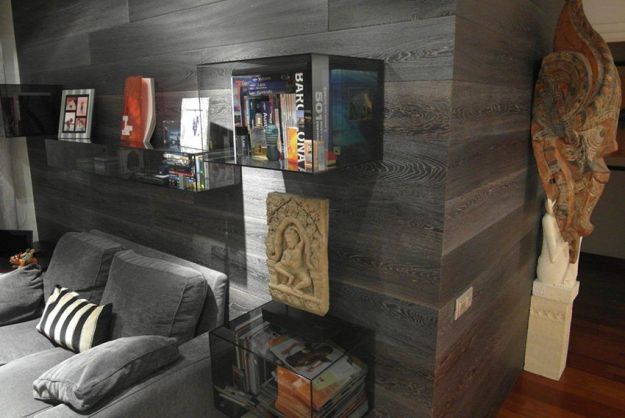
Biophilic Design: The Architecture of Life
Fascinating documentary from 2011 on the convergence of nature, conservation and architecture. Watch the Trailer.
What is Biophilic Design? Ultimately, biophilic design is more about restoring our connection to nature than it is about adopting a new methodology for designing the built environment. Its accomplishment will therefore, require a fundamental shift in human consciousness that leads to a new ethic of responsibility for caring for the earth and our relationship to it. The heart of this challenge is a modern world that has forgotten in so many ways how much our physical, mental and even spiritual health and well-being continue to rely on the quality of our relationship to nature. The promise of biophilic design will, therefore, require a new realization – whether at home or at work, at school or at play, indoors or outdoors – of how much we still depend on beneficial contact with nature to be healthy, productive and whole.
About the Documentary
Biophilic Design is an innovative way of designing the places where we live, work, and learn. We need nature in a deep and fundamental fashion, but we have often designed our cities and suburbs in ways that both degrade the environment and alienate us from nature. The recent trend in green architecture has decreased the environmental impact of the built environment, but it has accomplished little in the way of reconnecting us to the natural world, the missing piece in the puzzle of sustainable development.

Come on a journey from our evolutionary past and the origins of architecture to the world’s most celebrated buildings in a search for the architecture of life. Together, we will encounter buildings that connect people and nature – hospitals where patients heal faster, schools where children’s test scores are higher, offices where workers are more productive, and communities where people know more of their neighbors and families thrive. Biophilic Design points the way toward creating healthy and productive habitats for modern humans.
“Biophilic Design extends the theory and practice of green building into a new dimension–the realm of human connection with nature and sense of place. If designers and planners want to create truly sustainable places that people will love and care for now and many generations to come, they need to give this film their close attention. We are using it as an important resource for teaching in our college.”
Louise Chawla, Professor, College of Architecture and Planning, University of Colorado, Editor and co-Author, Growing Up in an Urbanizing World
“At a time when our society faces such extraordinary environmental and social challenges because of our separation from nature, this film is a breath of fresh air and takes us on journey of possibility and hope. This inspiring film features some of the leading visionaries in architecture and design, people who understand the real world need to design residential and commercial buildings and cities that are not only functional but feed our souls by reconnecting us to nature. Biophilic Design is essential viewing for policy makers, planners, designers and anyone engaged in re-designing the future.”
Bryony Schwan, Executive Director, The Biomimicry 3.8 Institute
“Natural environments are not amenities, and they are not mere ‘resources’ or quaint luxuries. They are essential to human mental, physical and social well-being, most urgently for our children. Stephen Kellert has yoked health and environment in a new and powerful way for all who view Biophilic Design.”
Dr. Richard Jackson, Pediatrician, Professor and Chair, Environmental Health Sciences, University of California-Los Angeles
“I was truly impressed with, as well as inspired by Biophilic Design…. [It] should be a required part of any design curriculum, not just for architects but also for engineers, interior designers, and even landscape architects. I can also see practicing designers using the film as an effective tool in talking with clients about the value of using ‘the poetry we find in nature’ for many different kinds of projects. I can see Biophilic Design extending beyond the design community. It will resonate with and inspired anyone remotely interested in the intersection of nature and design.”
Naomi Sachs, ASLA, EDAC, Founder and Director, Therapeutic Landscapes Network
“This film goes well beyond the current concern with `green’ building design…Provides convincing evidence from a wide range of types of settings that the reintroduction of nature into our everyday living environment profoundly impacts our individual health and well-being…Biophilic design could be a critical step in fostering a necessary societal level change of consciousness: through the broad reintroduction of nature into human habitats citizens will be more likely to become aware of their love of, and mutual connectedness with, nature and become passionate advocates for global change in how we work to sustain life on earth.”
Roger Hart, Director, The Children’s Environments Research Group, Professor, Environmental and Developmental Psychology and Earth and Environmental Sciences, City University of New York
“Progress has certainly been made with the more measurable and verifiable aspects of environmental design, such as minimizing the use of energy, water and materials. In the end, however, it is perhaps the depth of our emotional connection to the natural world that is most important to our environmental future. Deep affinity and resonance with nature give the environment its compelling value that ultimately leads to its measurable conservation. Biophilic Design, The Architecture of Life fills a huge void in our understanding the role of the natural world in modern life. It brings home why nature’s presence in our daily lives is central to our existence and what we can do to reverse a centuries old decline.”
Stephen Kieran, FAIA, Founding Partner, KieranTimberlake




